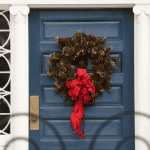So, your child has started walking, pulling themselves up using furniture and grabbing anything it sees. This part of a child’s life is so important for their development. Their eyes are opening to the world; they’re interested and amazed, and want to explore absolutely everything. Now is the time to start childproofing your home. There are many hazards for a child that we as adults wouldn’t even think of.
Internal doors and cupboards are where most accidents take place. For small children, internal doors offer an exciting prospect of adventure through the house, but they also bring trapped fingers with it. Trapping fingers in doors is one of the most common hazards. Followed closely by door handles. The handles on your doors offer a great method of swinging when it’s too cold outside, however, we as adults know that once the weight has been put onto the handle, it’s not long before the handle drops and an accident may occur.
You don’t need a professional to childproof your home. Save time and money by doing it yourself. Below, we’ve taken a closer look into the potential hazards within a standard home and have given a few easy and simple tips on how to protect your child from harm.
How to Baby-Proof French Doors
French doors are a pretty risky door-type for households with small children. Small panes of glass at low level can cause many accidents. If you’re lacking in durable double or triple glazed glass for your French door, we’d advise that you replace your old glass as soon as possible.
Some internal French doors can be found with sidelights. Sidelights are great for further opening up your internal space and allowing natural light to flow. However, it’s another sheet of glass that sits relatively close to the ground. Same as your French door glass, we’d suggest upgrading the glass in your sidelights to provide a more robust internal door.
To stop your little one from trapping fingers – which is a lot easier to do when you have 2 hinged doors – is to purchase draw catches. Although they’re marketed for drawers, these catches are great for preventing your child from playing with the doors.
How to Baby-Proof Bifold Doors
Now, bifold doors may be pretty robust, but like above, if your glass isn’t up to standard then it’s advised that you get the glass upgraded.
One of the main concerns for adults with children is that bifold doors offer a range of different places for children to get their fingers stuck. The bending of a bifold door opens up the hinges into your home, therefore providing easy access to tiny fingers. The best way to prevent the door from bending and exposing the hinges is to purchase a plastic slider lock. This lock allows you to move a slider across the joint of a door therefore preventing it from bending and opening.
For something a little more imaginative, try purchasing a hook and latch. By fixing this either side of your door’s joints – high enough so little fingers can’t reach – the hook and latch will prevent the door from bending and opening.
How to Baby-Proof Single Internal Doors
Single internal doors are the most common type of doors that we see in our homes. While there may not be any glass that needs upgrading, you still need to consider the handles and door knobs, and hinges.
For the opening and closing of a door using a handle or door knob, you can find inexpensive pinch guards. These guards are placed over the handles and require two components to be squeezed together in order to move the handle.
For preventing little fingers being trapped between the door and the frame, a Door Monkey is ideal. You place the device onto the edge of your door and upon pushing the door, the door will stay slightly ajar resulting in zero damage to small hands.
If you want a quick solution that doesn’t cost you anything then you can jam the door open by using a tea towel, towel or some form of clothing. Jam the door by pressing the material under the door. Whilst this isn’t a convenient method, it’ll definitely help short-term.
How to Baby-Proof Your Kitchen
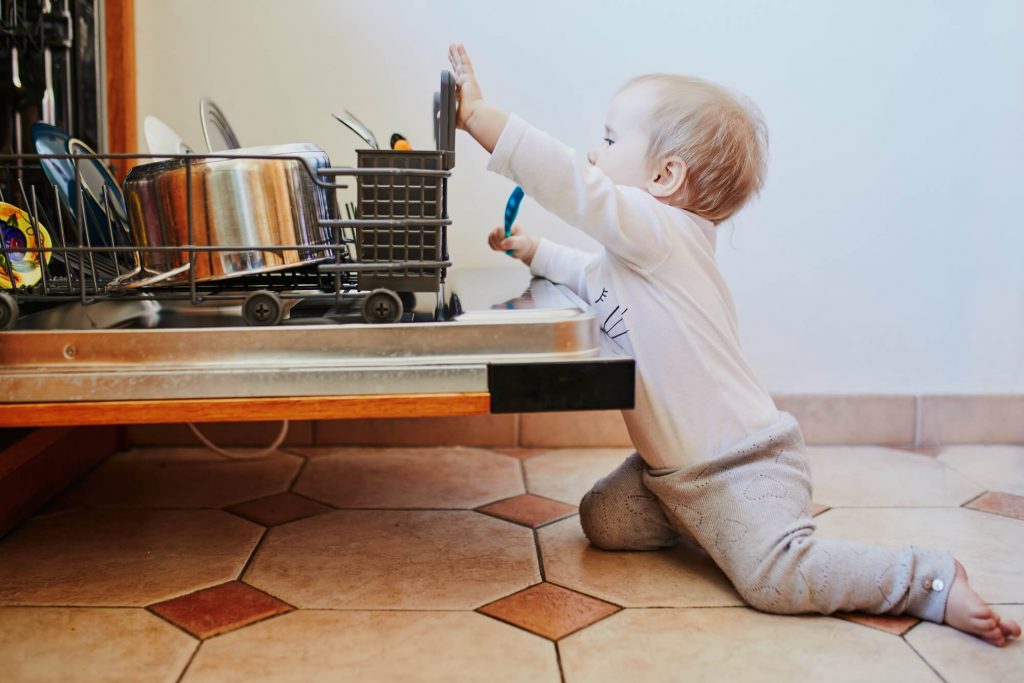
With doors being the main culprit for children trapping fingers, the cupboards and items within your kitchen are a close runner-up on the hazard scale. Children are curious and will often open drawers and cupboard doors to see what lurks inside. Whilst this is also a hazard for trapping fingers, banging heads on open drawers is another incident that parents would like to avoid.
Childproofing Your Oven Door
The oven is not a place for children to be messing around. Not only are they very easy to reach, they also get very hot. Even when an oven has been switched off for a while, the temperature can take a while to drop.
To stop little ones opening oven doors you can purchase a heat proof oven door lock. This door lock is super easy to install and is very robust. The lock sits at the top of the oven and is shaped to drop down over the gap of the oven door. When pulling on the handle, the oven door will hit the device and won’t be able to open.
Childproofing Your Fridge Door
Your fridge doesn’t seem as dangerous as your oven, right? In fact, it can be more-so. It’s the items within your fridge that are more hazardous to your little ones. To prevent your child getting ahold of glass jars and raw meat, you need to childproof your fridge door.
Childproofing your fridge door is simple. You can purchase a lock that attaches to the side of your fridge. It then bends round and attaches to the door of your fridge (somewhere near the handle). There is a clasp which allows for zero movement of the fridge door. For adults, you can simply unclip part of the mechanism making the contents of the fridge accessible.
Childproofing Your Cupboards
The items within a cupboard are also a hazard for children. Although, the cupboard door itself is more of a hazard than a fridge door. A little one hitting their head on the edge of an unclosed cupboard is an awful experience for both the child and the parent.
To childproof for cupboards you can use the same adhesive lock that we mentioned for your fridge. Alternatively, you can purchase a magnetic lock that comes with a key. It’s not as long-winded as it sounds. It’s really easy to install and simple to use. A quick turn of the year and magnetic strip is cancelled out and the cupboard can be opened.
For those of you that want to spend next-to-nothing on a DIY childproofing hack, if you have two cupboards next to each other, both with door knobs, you can tie some form of cord around both door knobs. To get into the cupboards you simply loosen or untie the cord.
Best Products for Baby-Proofing Your Doors
Clippasafe Finger Trap Protection Strips
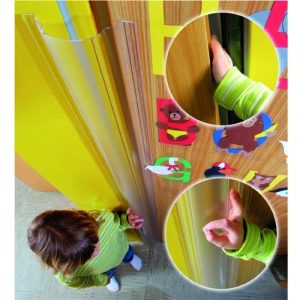
This handy door hinge guard from Clippasafe adheres to the door and the frame to prevent little hands creeping into the gap of an open door. You can find this product from Clippasafe and it’ll cost you £20.99.
Go Travel Door Stop
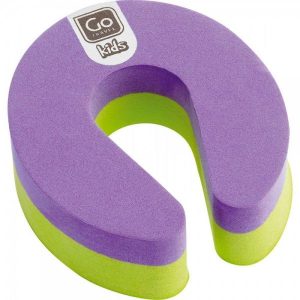
This door stop by Go Travel is the perfect companion when travelling with small children and babies. This device is made from flexible pads that fit round door frames or the edges of doors. This Go Travel device acts as a barrier between the door and frame and will prevent doors from shutting completely. You can find this on Just Sport and Leisure for only £2.99.
Lindam Dual Locking Multi-purpose Latch
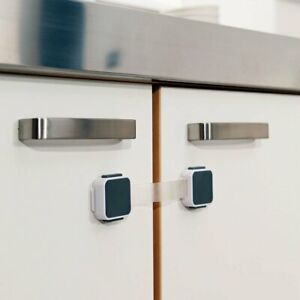
This multi-purpose dual locking system from Lindam is perfect for keeping little fingers out of cupboards and fridges; as well as prevent internal doors from opening. The device adheres to all surfaces and is extremely robust. Adults can release the mechanism easily by pressing in the 2 clips on either side of the device. This latch can be found in many stores and online shops and costs between £8 and £10. At the time of writing this, Baby Security are selling this device for only £6.99!




